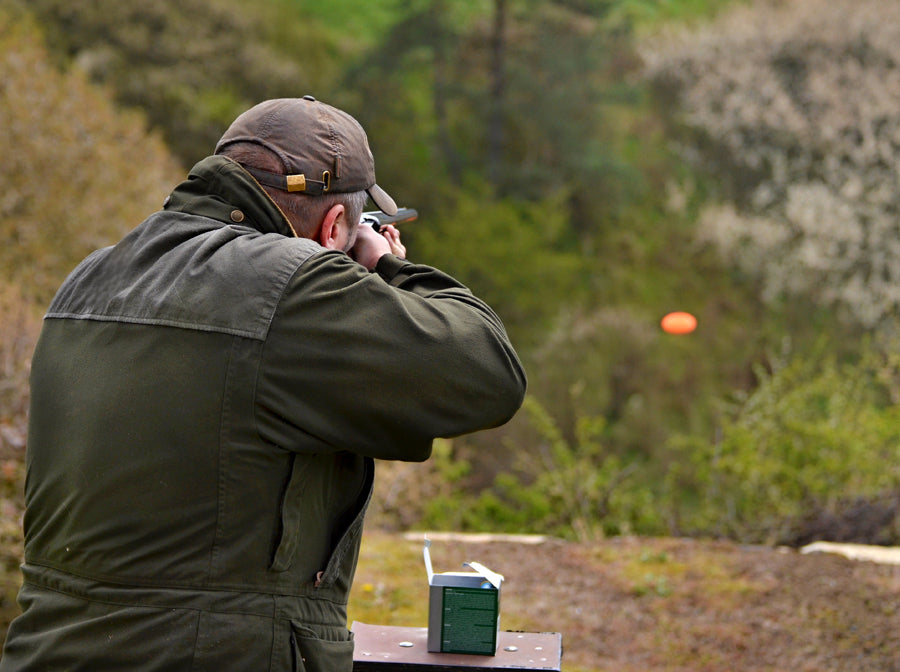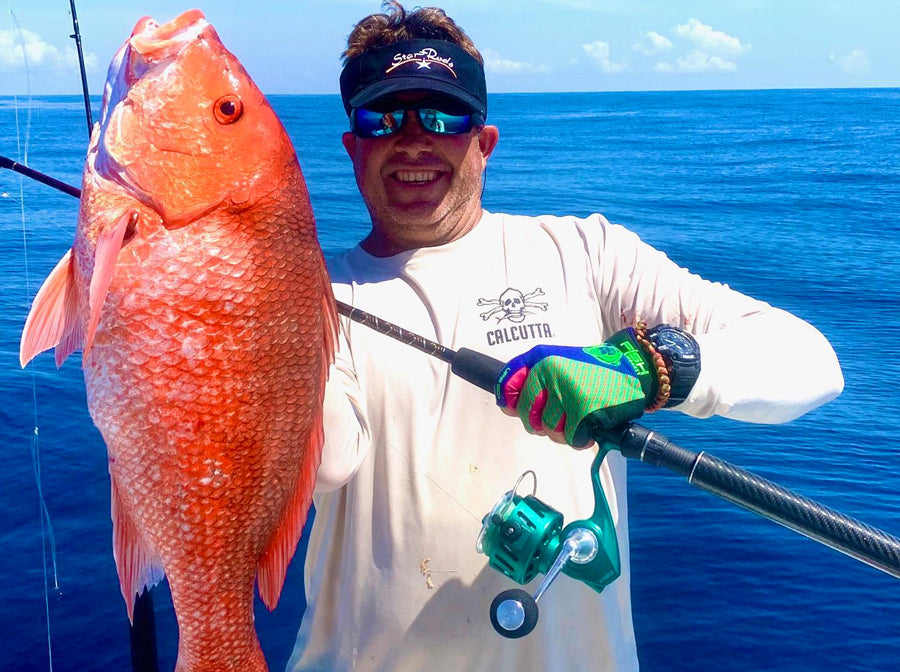Pulling the trigger on a clay pigeon streaking across the sky is incredibly fun and a great way to improve shotgun skills. There are a variety of shooting sports that involve busting clays with a shotgun. If you grew up in the South, or in a rural area, you probably have heard the game of sporting clays and other shotgun sports called “shooting skeet”. However, there is an actual game of skeet with a course layout and rules that differ from sporting clays, five-stand and other shotgun sports. Skeet shooting is affordable, easy to learn and accessible for most people regardless of age, experience level and physical ability. Here’s what you need to know to get started.
The game of skeet offers a fun way to improve wingshooting skills.
Olympic History of Skeet Shooting
Two sportsmen here on the East Coast invented the fast-paced and fun-filled shotgun sport we now call skeet in 1920. The pursuit has grown more popular with each passing year and continues to attract new generations of shooters. Skeet shooting first became a men’s Olympic event in 1968. In 2000, the Olympics held the first skeet competition for women and there’s been no shortage of television, newspaper, magazine and internet coverage of the US team since then.
Skeet Shooting for Beginners
That highly publicized international stage can make the sport seem as if it’s exclusive to elite athletes or those with years of experience, but nothing could be further from the truth. The welcome is a warm one for newcomers, regardless of skill level. You may not turn in a gold-medal performance, but you are guaranteed to build fond memories when squadded with family and friends.
The sport is not physically demanding, there are no long hikes required—making it one of the best for enthusiasts with limited mobility—and the maximum number of shots required per round is only 25.
Skeet shooting is affordable, easy to learn and accessible for nearly everyone.
The Layout for Skeet
Clay birds launch from two bunkers during a round—a so-called high house on the left, and a low house on the right. Shooters move to eight different stations in a round of skeet, each of them located on or slightly within the semicircle that connects both houses. Members of each squad, limited to a maximum size of five people, take turns shooting.
Clays launch from both houses and their number and direction vary by station. The maximum you’ll see aloft simultaneously is two, but the vast majority—17 of them—send only one bird once you make that familiar “pull” call. As participants move to the next position on that semicircle, the angle or presentation is altered and so is the relative distance to each house, making each challenge different than the one before.
Rules for competition can vary, depending on the range. Even the Olympic-, International- and American-based sanctioning bodies have subtle differences in their regulations. In some competitions, shooters can shoulder the shotgun before a clay launches. It’s lowered in other cases. If you’re part of an informal squad out for a friendly day of fun, no one’s going to enforce those protocols.
It’s best to have an experienced shooter in your squad of family and friends to help walk you through the course, although range safety officers are always there to help. All facilities have their rules posted. You can expect mandatory adherence to all safety rules.
The race guns on display in the Olympics lead some to believe skeet requires a lofty initial investment, but nothing could be further from the truth. You might already own everything needed to step up to the firing line.
Best Shotgun for Skeet
Those fancy over/under shotguns that claim gold, silver and bronze medals every four years are made specifically for the sport and fine-tuned to each shooter’s style. Owning one doesn’t guarantee success, though, and there are hundreds of regional and national champions who’ve claimed victory with homely shotguns.
If you’re going to shoot informal rounds with friends, any shotgun will do. Check range regulations, though, particularly if you have a semi-auto or pump action. A few diehards even claim a single shot is a great way to polish skills, but that’s tough territory for novices. Regardless of the make, you can only load at the firing line, the maximum number of shotshells is two and you unload and show safe after you’ve shot.
A 12-gauge is usually the best choice for beginners. The added number of pellets it puts into the air is a numerical advantage until you polish your leads. Many accomplished shooters go smaller, though, using 28-gauge and .410 bores to connect regularly. The smaller you go, though, the more skill required.
If you do catch the bug, then it’s time to step up to an over/under built for the sport. In the meantime, that faithful shotgun you’ve already own will do just fine.
Over/under shotguns are ideal for shooting skeet, but any shotgun will work.
Best Shotshells for Skeet
Ranges have strictly enforced regulations on the shot size allowed on their clay courses. Limiting shooters to the use of smaller pellets minimizes their travel distance.
Targets are relatively close in skeet, so No. 8 and No. 9 shotshells do a great job and the proximity means there’s no need for shoulder-bruising 3-inch or 3 1/2-inch magnum loads. There’s no need for that added recoil and it’s likely they aren’t allowed.
If you have some No. 7 1/2 left over from dove season, it works well—but double check range rules. The clubhouse will have plenty of approved ammo on hand.
Eyes, Ears and Shooting Gear
The basic rules of firearm safety apply everywhere on the range, including the mandatory use of eye and ear protection. If you’re a gun enthusiast, you probably have a set or two. If not, there’s no shortage of options available today.
Those glasses and earmuffs are easy to forget, so keeping them in a quality range bag or pack is an ideal solution. Look for a pack that offers a mix of internal compartments and external pockets, including water bottle pockets that will keep fluids accessible.
A soft-sided shotgun case is also a good idea. Most ranges require firearms to be in a case until at the firing line and you should always protect that gun during travel. The HQ Outfitters Canvas Shotgun Case is a solid choice, and a front pocket for additional storage is an added bonus.
Essentials for shooting skeet include shooting vests, eye and ear protection.
Why Try Skeet?
Skeet may be more than 100 years old, but it’s drawing more attention than ever before. The Olympics drive part of that rush to firing lines, but the publicity ignores four of the sport’s real assets.
It’s not an expensive sport to pursue. Aging enthusiasts or those with limited mobility can still be competitive. Like all the other clay shooting sports, it lends itself to leisurely outings and time with good friends and family. Perhaps best of all, the welcome for newcomers is always a warm one.
Skeet Shooting FAQ
Do I need to own a shotgun to shoot skeet?
No, most shooting ranges offer rental shotguns that you can use on their course.
Can kids shoot skeet?
Generally, there is no minimum age for shooting skeet. As with any shotgun sport, shooters need to be large enough and strong enough to consistently and safely shoulder and swing a shotgun. However, always check the shooting range’s rules. Some ranges require shooters to meet a minimum age requirement, which can vary by location.
Can I shoot skeet by myself?
Yes. Many shooting ranges have automated launchers that offer a delay after you push the release button.
How fast do clay pigeons travel?
The speed at which clay pigeons fly varies depending on how the individual shooting range has the launchers set up. Typically, clay pigeons are thrown at approximately 42 miles per hour (mph).
Where did trap shooting originate?
Unlike skeet shooting, the sport of trapshooting originated in England in the late 18th century. Trapshooting began as a way for hunters to improve their wingshooting skills. During a trapshooting round, hunters shot at live pigeons that were sprung from cages.
More Resources
Sporting Clays BasicsBasics of 5-Stand Clay Shooting
Basic Rules of Gun Safety
Beginner’s Guide to Dove Hunting
2022 Guide to Dove Hunting Essentials







